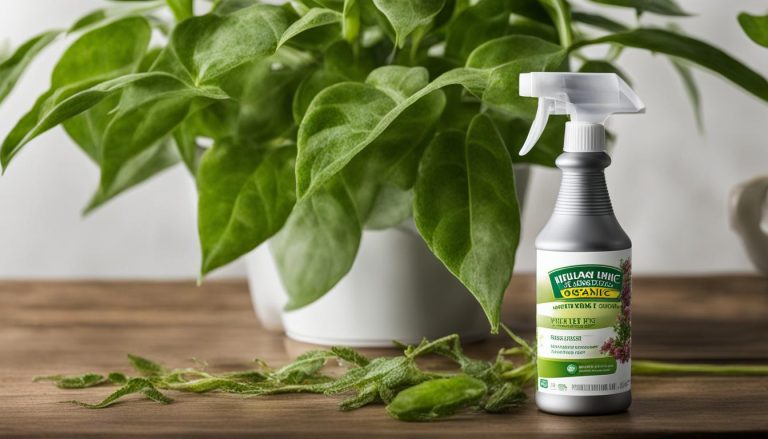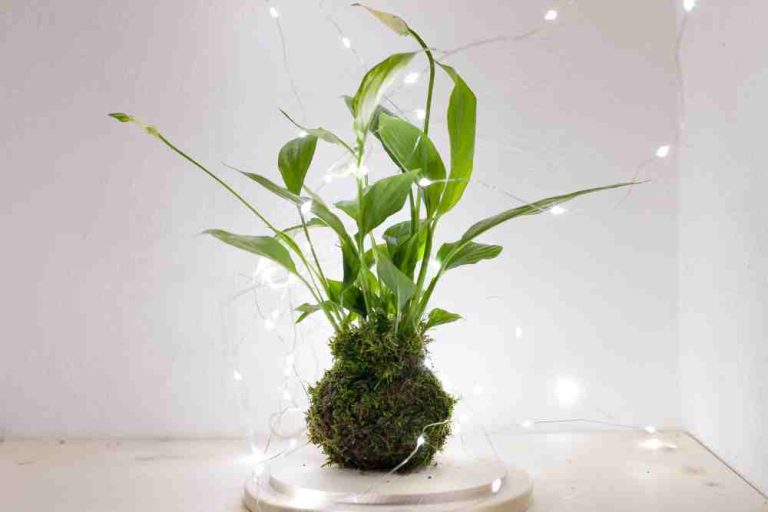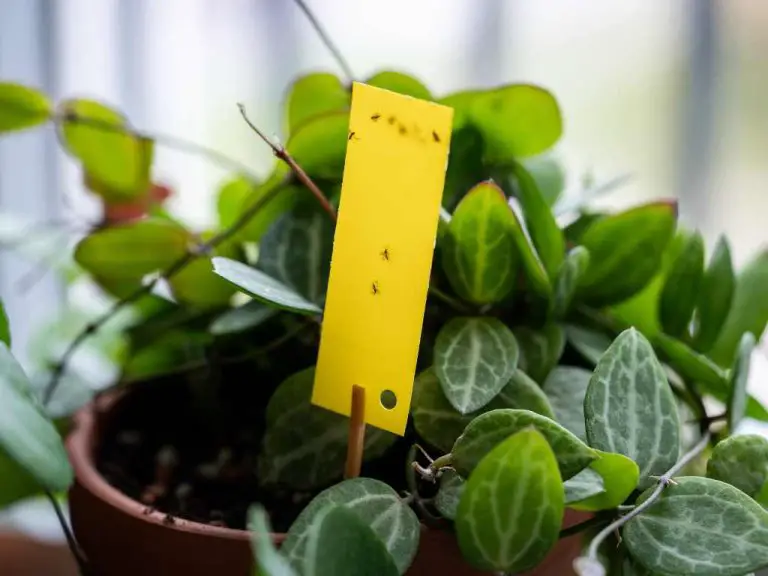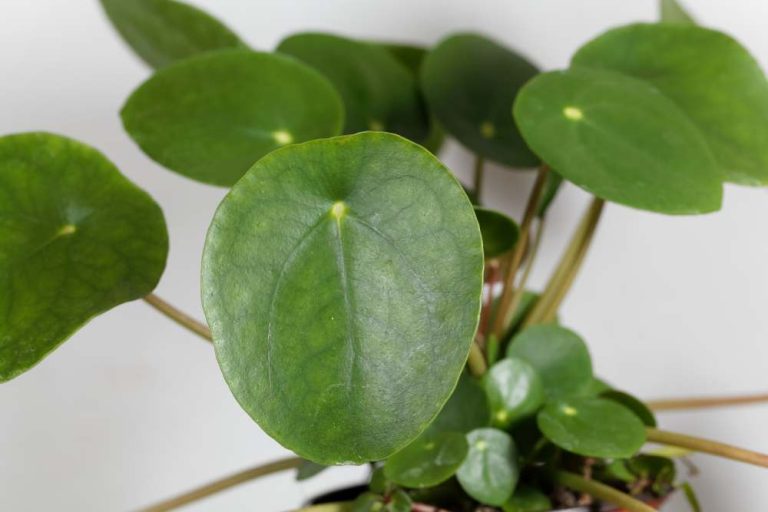8 Reasons For Chinese Evergreen Brown Spots: Browning No More
Chinese evergreen, also known as aglaonema, is a well-known stunning tropical plant adored for its distinctive leaves and ease of care. Chinese evergreen is indigenous to Asia. They are exceptionally well-liked indoor plants due to their high level of environmental tolerance. The lance-shaped leaves sprout from the center stalk.
As they become older, the bottom ones fall off, leaving thicker canes at the bottom with lovely diamond shapes. The texture and appearance of the foliage are frequently used to model fake plants. They can be so bright that you might think it’s one!
Do you have any questions regarding the Chinese evergreen brown spots of your cherished Chinese evergreen?
If you have missed the early warning signals of the issues, brown leaves indicate that you must act quickly to save the plant. This post will walk you through every potential cause of your Chinese evergreen going brown, as well as solutions to assist the plant in recovering from these issues.
Common Symptoms
There are various signs to watch out for when your Chinese Evergreen begins to turn brown. Several of these include leaves that are entirely brown, which might be an indication of overwatering. Brown tips are caused by overfertilization. Brown patches may appear after being exposed to direct sunlight.
You can see your Chinese Evergreen go through various stages of degradation as the browning problem worsens.
- Initial Stage of Browning: Small brown patches forming on the leaves during the early stages are likely to be visible. Exposure to direct sunshine or slight overwatering usually causes this stage.
- Mid-Stage of Browning: Brown tips and edges may start to show more during the mid-stage. Overfertilization is frequently to blame for this. Reviewing your fertilization and watering practices is crucial at this time to prevent further harm.
- Advanced Stage of Browning: The leaves may entirely wilt in the advanced stage. This typically occurs when the plant suffers from extreme overwatering, which causes root rot. If you want to save your Chinese Evergreen, you must treat the fundamental problem immediately.
Understanding the typical signs and phases of Chinese Evergreen browning will help you take the essential actions to identify and deal with the issue correctly. Remember that your plant needs correct care to be healthy, including regular watering, indirect sunlight, and avoiding overfertilizing.
Reasons for Browning My Chinese Evergreen?
It’s usual for any indoor plant to develop brown leaves. However, it indicates that your plant isn’t completely healthy and that you must care for it. Your Chinese evergreen may grow brown leaves for a number of different causes. These are a few of the causes:
- Direct sunlight
- low humidity
- Overfertilization & salt buildup
- Overwatering
- Underwatering
- The poor quality of the water
- diseases and an infestation of pests
- Temperature fluctuations
Let’s go through each of these in more depth before you start thinking about which specific cause may be to blame for your Chinese evergreen’s brown leaves.
1. Direct Sunlight
A tropical plant called a Chinese evergreen is accustomed to dappled sunshine in its natural habitat. It is the perfect indoor plant because it doesn’t need direct sun to flourish. Indirect bright sunshine is ideal for Chinese evergreen plants since it makes them grow, but direct sunlight can be quite harmful.
Brown leaves are a symptom of direct sun exposure. The top leaves that are exposed to the sun on the plant become burnt and begin to turn brown if exposed to direct sunlight. It may take some time for these leaves to turn dry and brown. When exposed to direct sunlight, the upper leaves will brown, but the lower leaves won’t be harmed and remain green. This is the simplest way to recognize browning brought on by direct sunshine.
If you observe this with your Chinese evergreen, you must move the plant to a location without direct sunlight. After that, you must remove the plant’s dark and discolored leaves. If the soil has become dry, give the plant a good soak and let it recover. Once the plant has recovered, wait to fertilize.
2. Low Humidity
Chinese evergreens favor high humidity, like the majority of tropical plants. 60% to 70% humidity is ideal for it. However, many homes lack adequate moisture, which causes tropical plants to experience a number of issues. Round leaves are one issue with searches.
Insufficient humidity will cause the leaves of your Chinese evergreen to dry out, turning them brown completely. You need to figure out how to raise the humidity if the Chinese evergreen leaves turn brown due to low humidity. You can use the following methods to give the plant additional moisture:
- Use a humidifier
- A pebble tray
- An Aquarium Of Fish Tank
Your Chinese evergreen should be grouped with other tropical plants. The plant is moved to the bathroom Plant misting The simplest and most effective method among the ones mentioned above for increasing humidity is to use a humidifier.
3. Overfertilization And Salt build Up
The Chinese evergreen is a light feeder and doesn’t require much fertilizing. The plant’s growth is adequately fueled by fertilization during the growing season. If you fertilize the plant in the winter or with a heavy quantity of fertilizer, the plant may get overfertilized. Salt builds up in the soil due to overfertilization.
The roots absorb water that contains too much salt, which then distributes it throughout the entire plant. The leaves develop dark tips or edges in response to the excessive salt. You must first remove the impacted areas if your Chinese evergreen has been overfertilized. Remove the Chinese evergreen from its container and examine the roots to see if they are harmed.
You should use new potting soil to re-pot the plant if the previous soil has too much fertilizer in it. You must remove the damaged roots and re-pot the plant if the roots are injured. If the salt accumulation is low, you can scrape off the top layer of soil. Delay fertilizing until the plant shows signs of new growth.
4. Overwatering
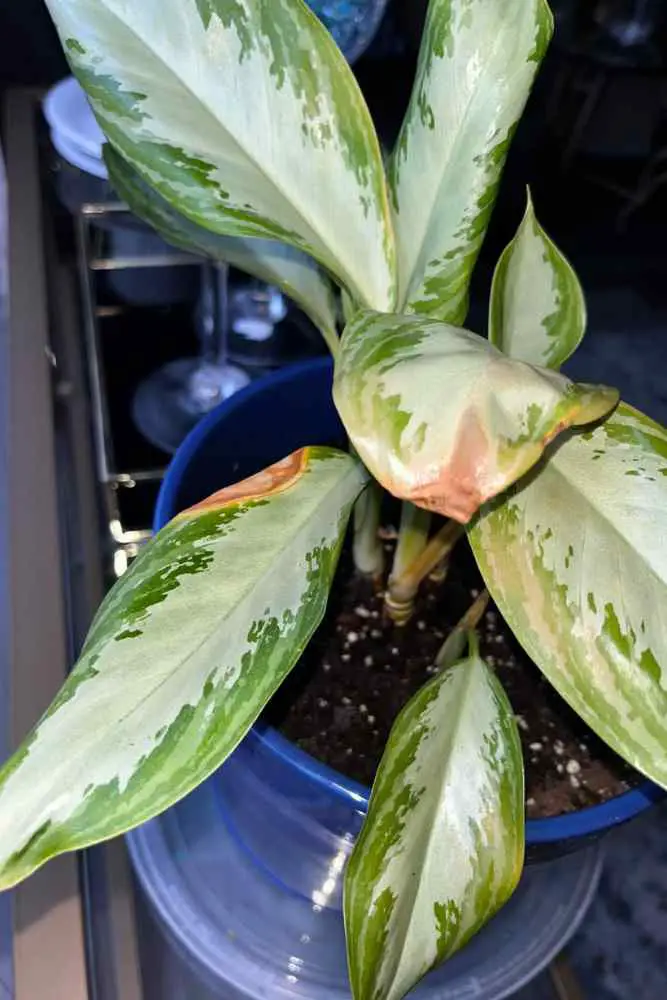
Overwatering is a common issue that affects all indoor plants. A Chinese evergreen that has been overwatered will show brown leaves, but only if you have overwatered it frequently. Chinese evergreen can withstand moist soil if it doesn’t become waterlogged, but it needs enough water to keep the soil moist.
The roots of the Chinese evergreen plant become suffocated by excess water when submerged in water for an extended period. Root rot affects the plant because the extra water blocks oxygen from reaching the roots, causing them to begin decomposing. Because the roots cease to function and send water and nutrients to all areas of the plant, the leaves become sick, lose color, and turn yellow and brown.
If your Chinese evergreen is being overwatered, immediately cease watering and give the plant some care. The plant recovers more quickly in the early stages when the excess water is removed and left in direct, bright sunlight. However, when the plant progresses, you must remove it to examine the roots.
Spreading the soil on a piece of paper and letting it dry in direct sunshine are options if the roots are strong. If you observe decaying roots, the Chinese evergreen must be replanted in a new container with fresh potting soil, and the damaged roots must be pruned. Before you start watering again, the plant must recover from the stress of overwatering.
5. Poor Water Quality
Most houseplants are susceptible to harsh minerals frequently present in ordinary tap water. If you’ve been watering your Chinese evergreen with tap water, this may cause any brown stains you’ve noticed on the leaves. Your Chinese evergreen should not be watered with regular tap water because it contains minerals like chlorine, fluorine, and bicarbonate.
It would be best if you quit using tap water to irrigate your Chinese evergreen. To water your Chinese evergreen, you can use filtered water or rainwater. A bucket filled with tap water can also be left overnight to allow the minerals to dissolve. Once it is done, you can spray your Chinese evergreen with this water. The leaves must not be watered while watering your plant.
6. Underwatering
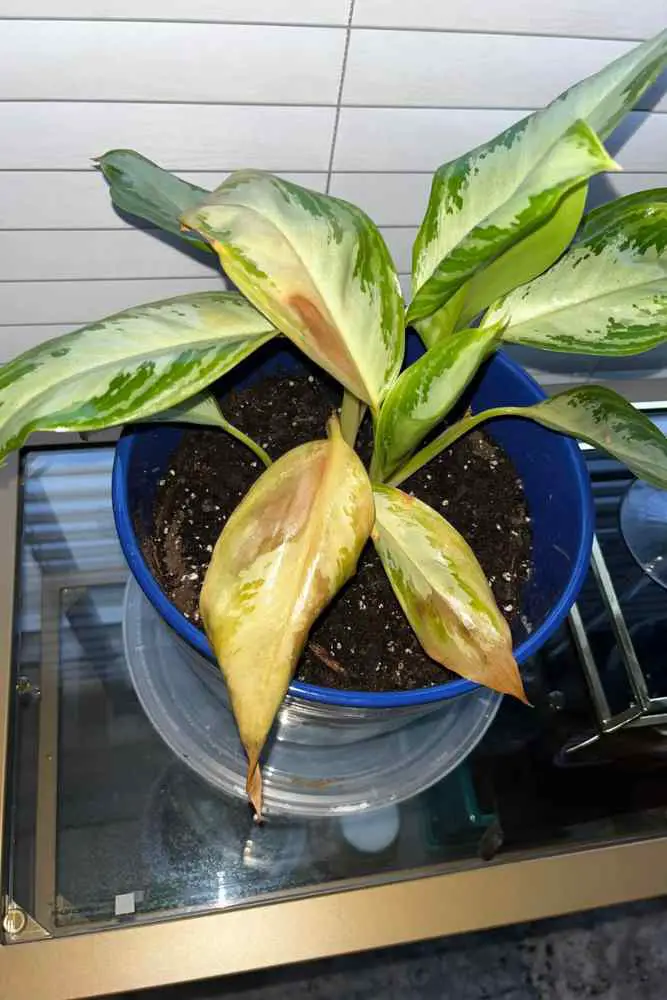
If you are unaware of how to water a Chinese evergreen or forget to do so correctly, you risk drowning it. Although Chinese evergreen requires little maintenance, you should still give it enough water. The soil should be consistently moist for the Chinese evergreen. You will quickly have a dry plant if you allow the soil to dry completely and don’t water it when it requests it.
Lack of adequate moisture will cause the leaves to dry out and become brown before eventually falling off the plant. How can a Chinese evergreen that has submerged be revived? Your Chinese evergreen appears to be underwater based on its crisp, brown leaves; you must bring it back to life. A dried Chinese evergreen can be brought back to life by being watered. It really is that easy.
If the soil appears to be excessively dry, you can remove your plant from its pot, put it in a container with water, and allow the soil to absorb the water. Give the plant some water and wait for the soil to absorb it if you don’t want to remove it from the pot. After the soil has absorbed that water, you can water deeply and let the extra water flow out of the drainage holes.
7. Pest infestation And Diseases
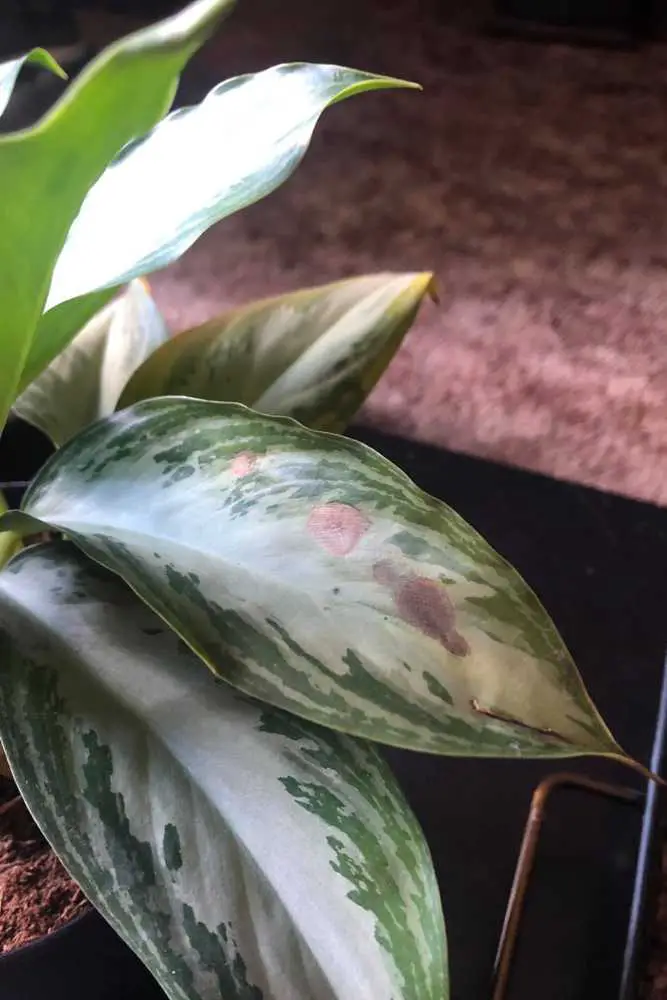
The Chinese evergreen may become more susceptible to pests and other bacterial and fungi diseases if it is overwatered. Mealybugs, thrips, whiteflies, and spider mites are typical pests that affect Chinese evergreen trees. If the plant has insufficient humidity or is submerged, spider mites will attack it.
Your Chinese evergreen will become weak if any pest attacks it since they destroy all of the plant’s nutrients and inflict severe damage. All plant sections experience issues when nutrients are insufficient. Brown leaves are common in such circumstances. Your Chinese evergreen’s leaves may become dark for a variety of reasons, including edema, powdery mildew, mold, and root rot.
How are diseases and pest infestations treated?
If you suspect your Chinese evergreen has an infestation of pests, you must separate it from other plants and inspect it to determine which pests have attacked the plant. You can physically remove the breasts from the plant if they are visible.
Infested regions can also be cleaned with a cotton ball dipped in alcohol. The Chinese evergreen plant could benefit from a Neem Oil solution sprayed on it to aid with any pest infestations. Fungicide can be sprayed on your Chinese evergreen to prevent and treat disease. Don’t forget to prune the damaged stems and leaves.
8. Temperature fluctuations
Most houseplants, including the Chinese evergreen, do not prefer temperature changes. These plants do well in warm environments; therefore, a consistent room temperature is ideal. Your Chinese evergreen, however, will get stressed and exhibit different problems, such as ground leaves, if you position it in places with temperature variations.
How can temperature changes be defended against by Chinese evergreen?
Follow these instructions if you don’t want temperature changes to stress your Chinese evergreen. Avoid placing the plant next to frequently opened and closed windows and doors. Keep the plant away from heaters like fireplaces and radiators.
During the winter, keep your Chinese evergreen away from windows with frost. Avoid exposing the Chinese evergreen to extreme heat or cold. Avoid exposing the plants to the AC’s direct air. Don’t move the plant outside when the temperature is too high or too low.
- 20+ Chic Boho Bedroom Ideas for a Cozy and Stylish Retreat - June 20, 2024
- 12+ Modern Boho Living Room Ideas to Create a Unique Oasis - June 10, 2024
- 10 Stunning Canopy Bed Ideas for a Dreamy Escape - May 16, 2024


